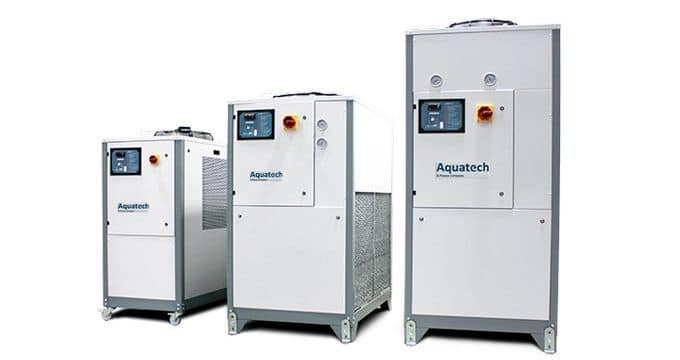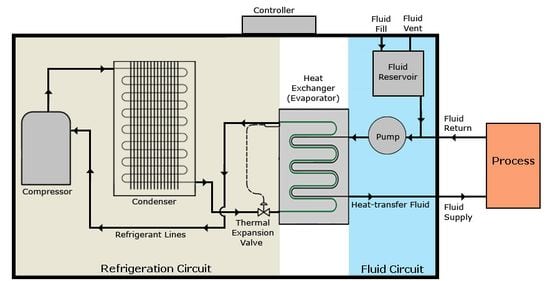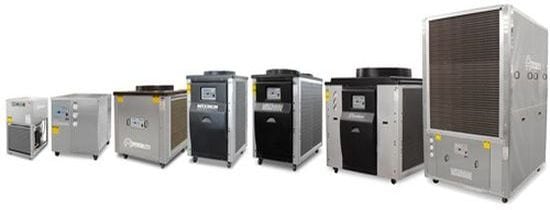A chiller is a machine that removes heat from a liquid via a vapor-compression or with the help of absorption refrigeration cycle. This device is a main node of the central air conditioning system and cools the entire building.
The chiller absorbs heat from the coolant at low temperatures. Heat recovery at high temperatures is an accompanying process. The device contains from 1 to 4 compressors, a capacitor, an electric motor, an evaporator, a refrigerant expansion device (thermostatic expansion valve) and control unit.
Generation of artificial cold is based on the simple physical processes – evaporation, condensation, compression and expansion of the working refrigerants.
These devices are divided into absorptive, with built-in or remote condenser by design type, and airy or aquatic models by type of condenser cooling. They also differ by the connection diagram and the presence of the heat pump.
Advantages
The list of pros includes:
– Ease of use.
The device provides preset air parameters for each room in the automatic mode in accordance with the sanitary standards.
– System flexibility.
The distance between the chiller and FCU is limited only by the pump capacity and can reach up to 300 ft.
– Low operating costs.
– Environmentally friendly.
– Architectural convenience.
The machine is located on the roof, on the technical building floor or in the yard. This saves usable space in the building and provides the flexibility to plan.
– Wide range of models.
Today the market offers including portable models of small and medium power, which are ideal for small houses.
– Very low noise level.
– Safety.
Stop valves virtually eliminates the risk of flooding.
– Chillers operate as a heat pump in the reverse mode in the cold season.
Of course, these factors significantly influence the choice of the optimal air cooling technology.
Absorption chillers
Absorption chillers are very promising due to lack of electricity consumption. The concomitant heat of production cycle is the main source of energy for absorption chillers.
A solution of two or three components is used as the working substance.
The binary solutions include absorber (adsorbent) and refrigerant. They provide high solubility of the refrigerant in adsorbent and substantially higher boiling point of absorbent compared to refrigerant. Water-ammonia (water-ammonia refrigeration machines) and lithium bromide-water are the most common as binary solutions. Accordingly, the water and lithium bromide performs the function of adsorbents, the ammonia and water performs the function of refrigerants.
The operating cycle is as follows. The working substance boils in the generator at the expense of concomitant heat. Practically pure refrigerant boils off because its boiling point is much lower compared to absorbent. Refrigerant vapor enter the condenser, are cooled and condensed, transmitting its heat to the environment. Next, the liquid is throttled, cooled at the expansion and enters the evaporator. After evaporation and heat transfer, fluid is directed into the absorber. Absorbent without refrigerant is supplied through the throttle that absorbs the refrigerant vapor due to its high solubility. Finally, the saturated absorbent is pumped into the generator. The refrigerant evaporates again and the cycle is repeated.
The vapor compression chillers
These chillers are the most common. Generation of cold is carried out in the vapor compression cycle. Cycle consists of four main processes – a compression, a condensing, throttling and evaporation. Respectively, the apparatus comprises a compressor, condenser, expansion valve and evaporator.
This video convincingly demonstrates the convenience and wide capabilities of the portable handheld drink chiller entitled Spin Chill.



